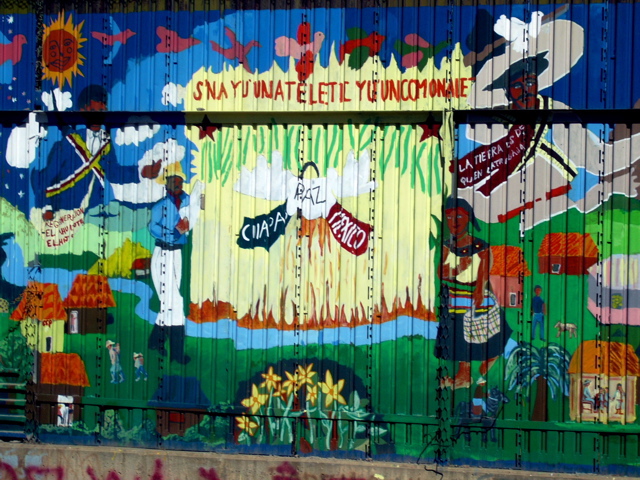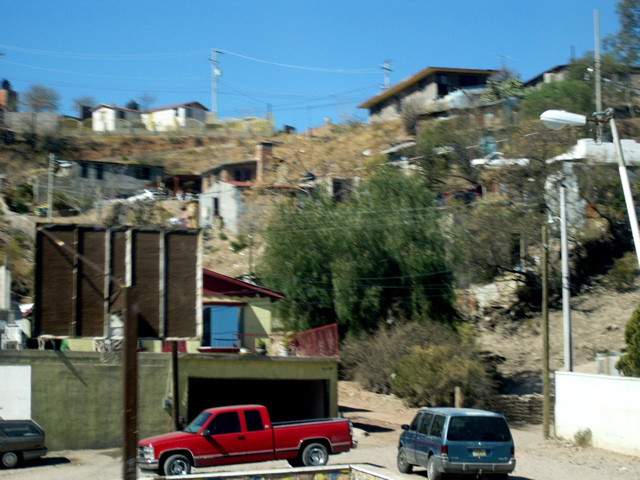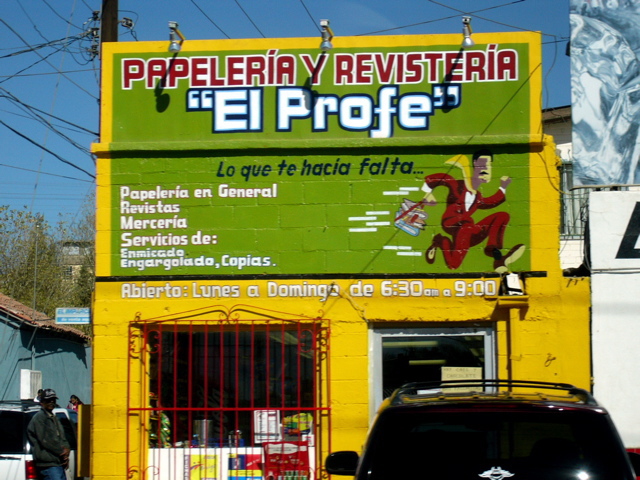|
|
||||
|
The Mexican Side Of The Coin
To say are class trip to Nogales was an eye opening experience would be an understatement. Dr. K. our instructor for this class commonly refers to the Arizona/Mexico border as a “living laboratory.” This is a good description considering all of the issues that affect this particular part of the world. Only along the Southern U.S. border does the first world collide with the developing world in such a dramatic fashion. This became particularly evident when during our class trip to Nogales we visited a maquiladora. A maquiladora is a factory that is commonly owned by American companies that manufacture and assemble goods for the U.S. market. The maquiladora industry, according to Francisco Trujillo, the Mexico director of Borderlinks, dates back some thirty years. However NAFTA was the real beginning on a much larger scale for the industry. The reason these factories exist in Mexico is simple: cheap dependable labor. To give you an example of what is meant by cheap dependable labor; the average minimum wage in Mexico is around six dollars a day. This six dollars a day doesn’t mean part time rather this means at least eight hour days. According to Brooke, a representative of Borderlinks, the average Mexican working in a Maquiladora makes anywhere from twenty-seven dollars a week to up to thirty-five dollars a week.
In fairness to the maquiladoras they do pay an acceptable wage considering the geographic location (Mexico). However what I gather from my visit as well as the research packet provided by borderlinks told a completely different story. Aria Guadalupe Torres author of, We Are Not Machines: Corporations that bring jobs must bring justice too, explains in her writing about the deplorable conditions in which maquiladora workers and their families live. “I lived in one room with an outdoor toilet. My Colonia (neighborhood) had no potable water, no electricity, no sidewalks, and no infrastructure.” During our trip in Nogales we stopped and had lunch at a Colonia similar to the one Maria describes. Since there were so many of us we had to break up into groups of five. As my group walked to the home in which we were going to eat, I started to get mad considering the extremely horrible conditions these people were forced to live in. I was expecting awful living conditions because of the readings I had done prior to the trip, but when I was actually there and all five of my senses are working to enhance the experience, the trip then morphed into something very real. Personally speaking the condition in which these people live is inexcusable considering these maquiladora workers work for large and rich American corporations. After lunch in the colonia we finally arrived at the maquiladora. The factory looked like any other large factories that you would find in the US. However form the beginning, I was a little apprehensive considering all of the above factors. From the start something seemed wrong. Apparently the right people didn’t know we were coming over, so we had to sit in the parking lot for about ten minutes or so. Finally a sweet, little, short curly haired, pregnant Mexican lady escorted us into what appeared to be a board room. The room we entered into was extremely hot, too hot. This seemed a little odd to cram thirty people into a small room that seemingly was too hot. From this point the curly haired Mexican lady, who was director of human resources for the maquiladora, described her position in the company as well as what they make at this particular maquiladora. After rushing through the normal company spiel she invited us to ask questions. For the most part the questions that were being asked were formal and did not seem to cause much concern. However one question did collectively seem to bother the whole room. One of my classmates asked, why don’t maquiladoras have any union representation? The answer the sweet little curly haired lady gave was shocking. She said they don’t need inions because they (Mexicans) know how to control their people. This revelation blew me away, how could such a large productive industry exist with no unions. Were the workers in the maquiladoras ignorant tin the fact that they have strength in numbers or is the problem a matter of having too many workers willing to work?
All and all the trip was a great and very beneficial experience. The knowledge that I gained form my visit to the maquiladora and the colonia is something that I will take with me for the rest of my life. However something has to change with regards to how the maquiladoras and the Mexican government treat the people that work in these factories. With all the money that these maquiladoras are producing some sort of infrastructure should be established in the Mexican border towns/cities. In actuality according to, “Top Ten Reasons for Global Exchange,” the money produced by these maquiladoras does not stay in Mexico. Rather the money is transplanted into the US economy and since NAFTA's inception an estimated eight-million families have slipped from middle class to poverty. NAFTA built up maquiladoras industry, which was supposed to help the average working Jose, when in reality all it did was create new and large problems along the border region. Like I said before, the trip was extremely eye-opening and since my return home I’m only left with more questions that appear to elude us all.
|
||||
|
||||



